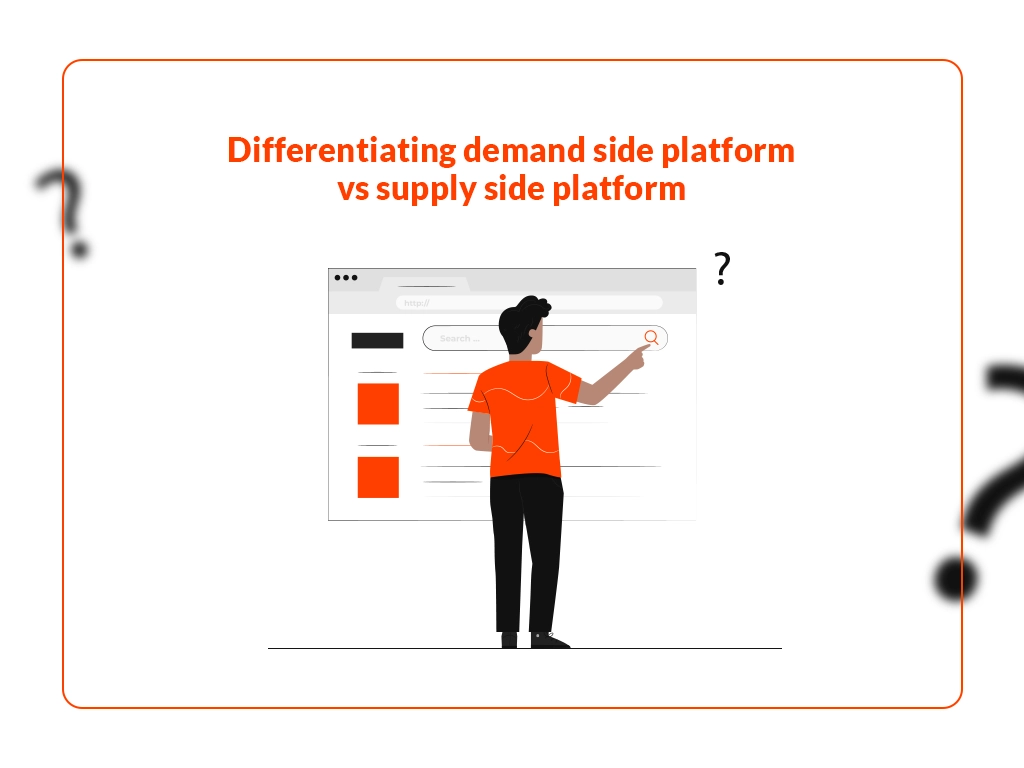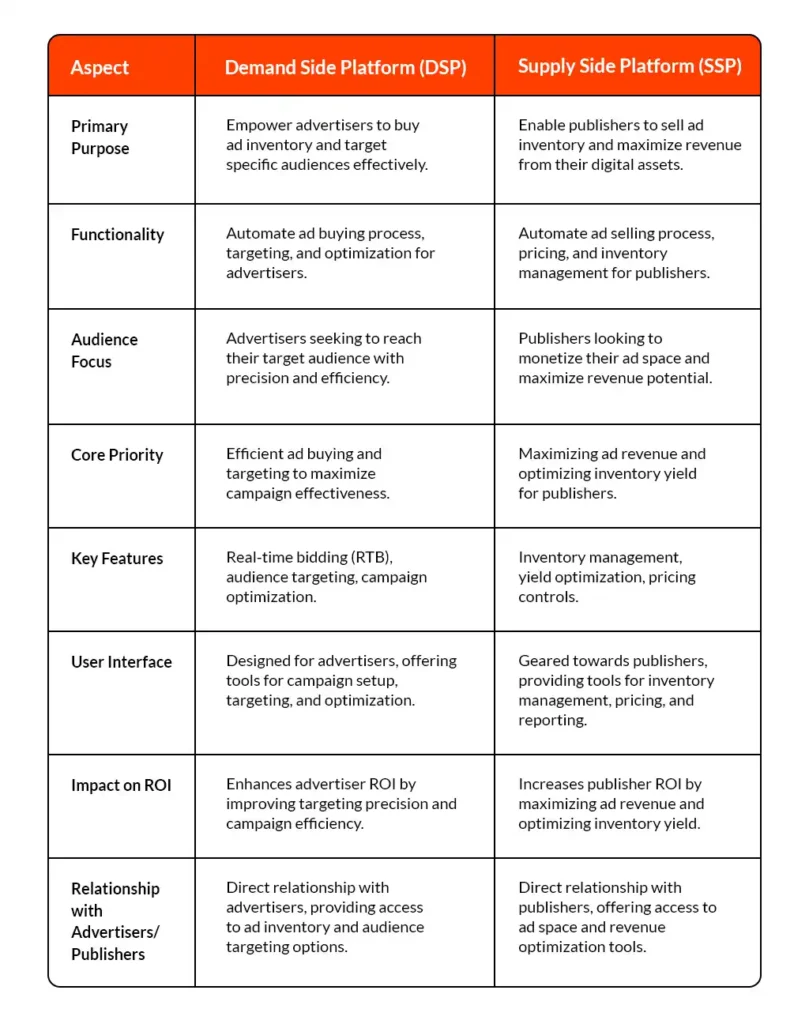Differentiating demand side platform vs supply side platform

Introduction:
In the dynamic realm of programmatic advertising, two key players dominate the landscape: Demand-Side Platforms (DSPs) and Supply-Side Platforms (SSPs). Understanding the distinct roles and functionalities of these platforms is essential for navigating the intricacies of digital advertising. In this blog, we’ll delve into the fundamental differences between demand Side Platform vs supply Side Platform, exploring their unique contributions to the programmatic advertising ecosystem.
What is DSP?
A Demand-Side Platform (DSP) is a powerful tool utilized by advertisers and media buying agencies to automate the process of purchasing digital ad inventory. DSPs empower advertisers to target specific audience segments and bid on ad impressions across various channels, including display, mobile, video, and social media. By leveraging sophisticated algorithms and real-time bidding (RTB) capabilities, DSPs streamline the media buying process, enhancing efficiency and effectiveness.
What is SSP?
On the flip side, a Supply-Side Platform (SSP) serves as the counterpart to DSPs, catering to publishers seeking to monetize their digital ad inventory. SSPs enable publishers to connect their inventory to ad exchanges and demand sources, facilitating the automated sale of advertising space. Through SSPs, publishers can optimize ad revenue by setting pricing rules, targeting criteria, and access controls for their inventory, ensuring maximum yield and efficiency.
Where do they fit in the Programmatic Advertising Ecosystem:
Both DSPs and SSPs play integral roles in the programmatic advertising ecosystem, functioning as intermediaries between advertisers and publishers. While DSPs enable advertisers to access and purchase ad inventory, SSPs empower publishers to monetize their inventory effectively. Together, these platforms facilitate the seamless buying and selling of digital advertising space, driving efficiency, transparency, and value for all stakeholders involved.
Demand Side Platform vs Supply Side Platform:
At their core, DSPs and SSPs serve opposing ends of the digital advertising spectrum. DSPs focus on empowering advertisers to target and reach their desired audience effectively, while SSPs enable publishers to monetize their ad inventory efficiently. While DSPs prioritize efficient ad buying and targeting, SSPs prioritize maximizing ad revenue and optimizing inventory yield. Understanding the distinctions between these platforms is crucial for advertisers and publishers alike to navigate the complexities of programmatic advertising successfully.
Conclusion
In conclusion, DSPs and SSPs are essential components of the programmatic advertising ecosystem, each serving distinct yet complementary roles in facilitating the buying and selling of digital ad inventory. By grasping the nuances of DSPs and SSPs, advertisers and publishers can harness the full potential of programmatic advertising to drive impactful campaigns and maximize revenue opportunities.


